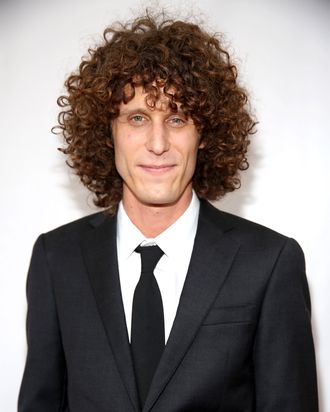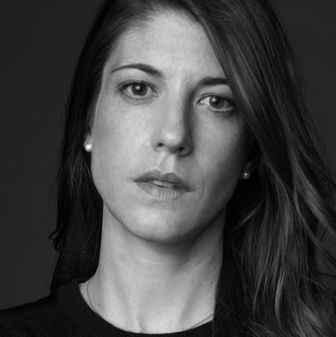
The True Cost is a hard film to watch if you have ever, well, been to a store and bought clothes. Director Andrew Morgan pairs shots of Black Friday shoppers with bodies of the 1,100 workers crushed when a factory collapsed at Rana Plaza in Bangladesh two years ago — a galvanizing event that spurred Morgan into activism. He tells the story of a single mother who tries to organize a labor union in her factory and gets locked in a room and beaten by her employers. We meet mentally handicapped kids in India, who are reportedly suffering from the impact of pesticides used to grow the cotton for our clothes. We see children playing near landfills overflowing with those same clothes, now discarded.
In the film, premiering on Netflix on June 29, Morgan blames unregulated fast-fashion companies and unfettered American consumerism for the current state of affairs. The Cut caught up with the director last night at a Peggy Siegal screening of the film hosted by Dean & DeLuca, which drew Anne Hathaway and Georgina Chapman. We asked him what shoppers can do, what the fashion press can do, and if power players like Anna Wintour — who watched the film last night with her sunglasses on — have a role to play in this movement.
What do people do now?
For me personally, when I started making the film I made a choice to start buying secondhand, and that is not a solution, but I just wanted to slow down and understand what I was buying. We should invest in things that we love, that we’re going to wear for a long time, and what I want people to get off of is that endless treadmill of bringing cheap, disposable stuff into their lives.
Do consumers have the information to make those decisions?
I don’t think they have ever been told, and I think this is just the beginning of it. I read a New York Times article about the Rana Plaza collapse, and I realized that I had never, in my life, thought about where my clothes come from. What we are trying to do is force the conversation, and crowdsource the solutions. We’re never going to fix this if it is not something we are even discussing.
The high-fashion brands are using factories to some degree that have higher quality, better working conditions, slower processes, but what responsibility do the big designers have in this conversation, because it is still one big fashion family?
The brands have most of the power in the supply chain, in this equation, and they have the least amount of responsibility right now. They have engineered a system to position them to reap most of the rewards, and to be called to account for almost nothing. These local governments will bend over backward to please those companies. We’ve allowed this system to spin out of control. I think it is fundamentally unjust, and inhumane, and on the environmental side, unsustainable. I’m not criticizing one group. I’m just saying the groups involved have created a system that makes it very difficult, to enforce, to call to account, and the people who are left to suffer have absolutely no voice.
We just had Anna Wintour, one of the most powerful women in fashion, here. What is that responsibility?
I have to be delicate. But I will say, I’m fascinated and intrigued by the response from the fashion industry. One of the things it says is that there is a difference at our hearts, and at the hearts of some of the people you are mentioning, between fashion, what it has historically been, and what this big business model has created.
All we want to do in the film is start a conversation. I love the fact that these people are in the room, and are willing to have it. I want them to print it and we are pushing, and we are pushing hard, and we will see what happens and what doesn’t. There are advertising interests at play. These are big businesses. These are publicly traded companies, but I’m hopeful. To me, there is a tipping point coming, and the fashion media, the fashion press, they are gatekeepers.
What would you say to the criticism that it is easy for people of privilege to go buy higher-end stuff, but there are people who can’t afford to do that?
I have four kids, I live in Los Angeles, and I was making a documentary for the last two years, and I don’t make a lot of money, so for me it was about getting creative. You’d be amazed how buying less disposable cheap stuff that’s going to fall apart that season, and just rethinking that money alone [helped].
This interview has been edited and condensed.


